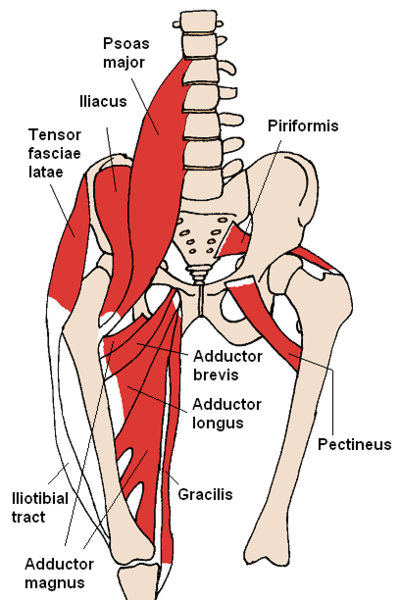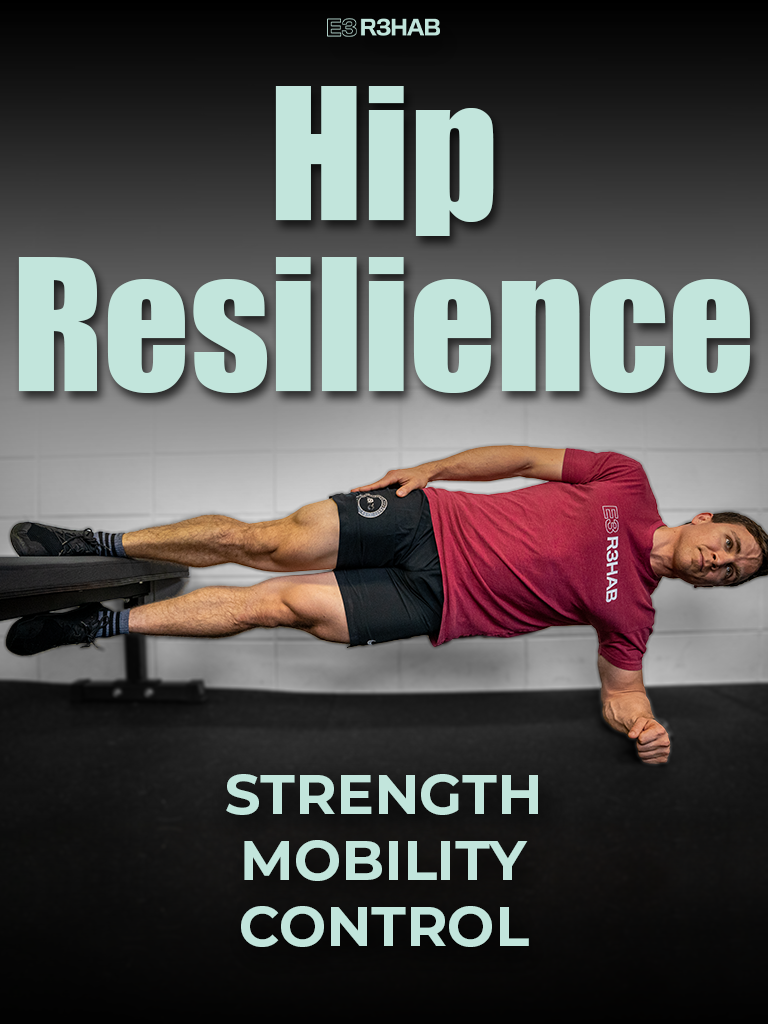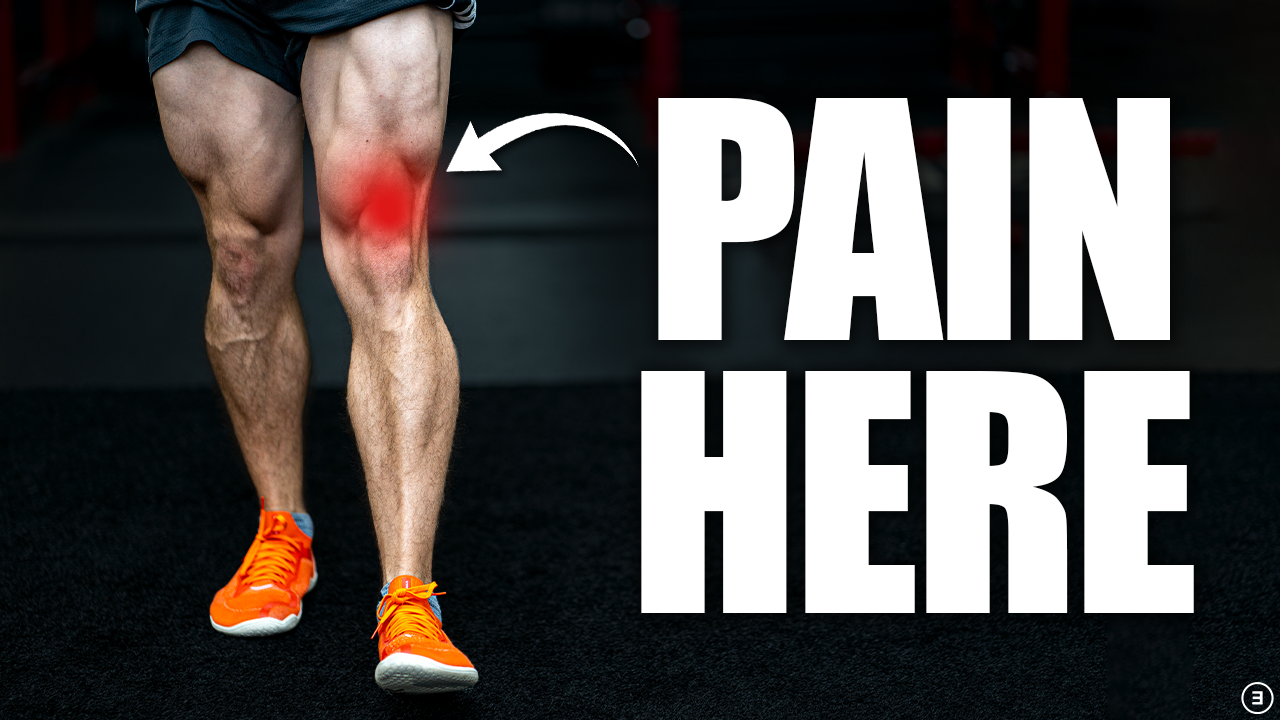The purpose of this blog is to discuss why Copenhagen Planks are an important consideration for rehab and injury reduction programs for the groin.
Looking to improve the strength, range of motion, and control of your hips to enhance your function and performance? Check out our Hip Resilience program!
Overview
The Copenhagen plank, or Copenhagen adduction exercise, is a side plank variation that targets the muscles of the inner thigh and groin- the adductors. These muscles consist of the adductor longus, adductor brevis, adductor magnus, pectineus and gracilis, all of which are primarily responsible for adducting the hip, or moving the leg toward the midline.
Additional information: Adductor longus and pectineus will also contribute to hip flexion, while adductor magnus (posterior head) also contributes to hip extension. Some of these muscles also have secondary actions, including hip flexion (adductor brevis and gracilis), internal rotation (adductor longus, adductor brevis, and pectineus), and extension (anterior head of adductor magnus).
Groin Pain and Adductor Strength
Groin pain has a high prevalence across an array of different sports such as soccer, hockey, lacrosse, football, Rugby, Australian football, and many other activities. Essentially, athletes who participate in sports with kicking or running are at a higher risk of groin pain, usually in the form of muscle strains or sports hernias. Due to these groin related injuries, there are a significant number of athletes being taken out of games, missing seasons, or even having to retire early.
Numerous studies have shown a correlation between hip adductor strength and groin related injuries.
- Crow et al in 2010 showed there is a significant reduction in hip adductor strength both before and during the onset of a groin injury.
- Thorborg et al in 2014 compared male soccer players with and without groin pain, and observed those with groin pain demonstrated increased weakness in eccentric hip adduction strength on their dominant, or kicking leg.
- Bourne et al in 2019 showed that players with greater hip adduction strength had significantly reduced odds of suffering a future hip or groin injury.
This information highlights the importance of hip adduction strength for reducing the risk of groin related injuries and maximizing the function of the hip and groin.
Copenhagen Adduction Exercise
Before moving forward, it should be noted that a majority of the research looks at the use of the Copenhagen adduction exercise, an eccentric variation involving a partner and no equipment.
An individual starts by lying on his or her side with the forearm supported on the floor and the top leg being held by a partner at either the ankle or the knee. The individual then raises his or her body and the bottom leg up, until the feet touch and the body is in a straight line. The body and leg then lower, so the foot just gently touches the floor, and then is repeated for desired repetitions.

Copenhagen Plank Benefits
Simply put, no other exercises have been shown to be as beneficial for targeting the groin region as the Copenhagen adduction exercises.
Adductor and Trunk Activation
In 2013, Serner and colleagues compared 8 adductor exercises and found the Copenhagen adduction exercise to elicit high activation of the adductor longus. Furthermore, it was also shown to elicit the highest activation of the external oblique and rectus abdominis.
Important consideration: Some groin problems may have a secondary related abdominal issue. Due to the close proximity of the origin of the adductors and the insertion of the abdominal muscles, this further supports the use of Copenhagen plank variations in rehab or injury risk reduction programs for the groin.
Increase Adductor Strength
The FIFA 11+ program is popular for reducing a wide range of injuries, however it has not been shown to be successful with groin injuries. In 2017, Haroy and colleagues demonstrated that adding a Copenhagen plank variation into a FIFA 11+ program led to a significant increase in eccentric hip adduction strength.
Ishoi et al in 2016 had 24 male soccer players perform the Copenhagen adduction exercise two times a week, while progressively increasing the number of sets and repetitions over the course of 8 weeks (starting with 2 sets of 6 each and ending with 3 sets of 15 each). At the end of the program, these athletes demonstrated a 35.7% increase in eccentric hip adduction strength!
Reduce Groin Injuries
In another study by Haroy and colleagues (2018), a group of male soccer players completed a 36-week long adductor strengthening program using the Copenhagen Adduction exercise.
During an 8-week preseason, they performed multiple sessions a week (starting with 2 weekly sessions, 1 set, 3-5 reps per side), while progressively increasing the repetitions (working up to 3 weekly sessions, 1 set, 12-15 reps per side). They continued the program into the 28 week long season, keeping repetitions and intensity high, but reducing the training frequency (reducing to 1 weekly session, 1 set, 12-15 reps per side).
The implementation of this program reduced the prevalence and risk of groin problems in male football players 41%!
The Copenhagen Plank
While the Copenhagen adduction exercise has been shown to be extremely beneficial, it is considered an advanced variation and may not be practical for some (since it requires a partner to hold your leg).
A great alternative is the Copenhagen plank: a version you can do at home, does not require a partner, and has multiple levels of progressions for various skill levels.
Execution
Similar to a side plank, start on your side with the forearm on the ground, hips and shoulders stacked, and legs straight.
However, instead of your feet on the ground, place the top foot onto a chair, bench or another stable surface, while holding the bottom leg off the ground.
The goal is to maintain a straight line from your shoulder to your ankle.
Your bottom leg can be straight if using a chair or bench, or it can be bent if the surface prevents you from straightening the leg, such as when using an ottoman or couch.
Copenhagen Plank Regressions
If the variation with the top leg straight is too challenging, you can either rest the bottom leg on the ground or bend the top knee. These both reduce the amount of load and effort placed on the top leg, thus making it easier to hold.
Copenhagen Plank Progressions
If holding the Copenhagen plank is not sufficiently challenging, one option for progressing the difficulty is by adding hip movement, similar to the Copenhagen adduction exercise shown earlier.
Start with the top leg bent, and slowly move the bottom leg and body up and down. To progress, straighten the top leg and perform the same movement. These should be performed slowly and with control.
Don’t forget to check out our Hip Resilience Program!
Thanks for reading. Check out the video and please leave any questions or comments below.
References
- Bourne M, et al. Preseason hip/groin strength and HAGOS scores are associated with subsequent injury in professional male soccer players. JOSPT. 2019:1-34.
- Crow JF, et al. Hip adductor muscle strength is reduced preceding and during the onset of groin pain in elite junior Australian football players. J Sci Med Sport. 2010;13(2):202-204.
- Thorborg K, et al. Eccentric and isometric hip adduction strength in male soccer players with and without adductor-related groin pain: an assessor-blinded comparison. Orthop J Sports Med. 2014;2(2):2325967114521778.
- Serner A, et al. EMG evaluations of hip adduction exercises for soccer players: implications for exercise selection in prevention and treatment of groin injuries. BJSM. 2013;48(14):1108-1114.
- Haroy J, et al. Including the Copenhagen Adduction exercise in the FIFA 11+ provides missing eccentric hip adduction strength effect in male soccer players: a randomized controlled trial. AJSM. 2017;45(13):3052-3059.
- Ishoi L, et al. Large eccentric strength increase using the Copenhagen adduction exercise in football: a randomized controlled trial. Scand J Med Sci Sports. 2016;26(11):1334-1342.
- Haroy J et al. The adductor strengthening programme prevents groin problems among male football players: a cluster-randomised controlled trial. BJSM. 2019;53:145-152.







